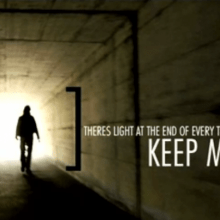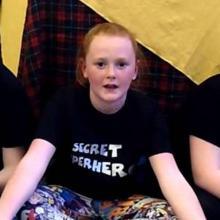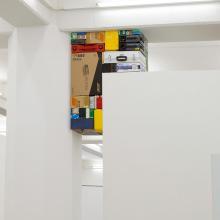Background
Includem was founded 14 years ago to support socially excluded young people achieve better lives. Includem’s overarching framework of intervention consists of four parts, one of which is ‘A Better Life’, a core element of practice shared by all Includem services and which is the focus of this case study.
‘A Better Life’, is a practitioner toolkit specially designed for Includem by Tim Chapman. Bbased on experiences of ‘what works’, and in collaboration with Includem practitioners, external specialists, young people and their families It is a dynamic series of practitioner modules to support young people, each containing practice guidance, processes and exercises to complement and reinforce Includem’s relationship based approach. Whilst focusing on working one-to-one with young people in their own communities staff use this flexible cognitive behavioural approach-based toolkit to assist relationship building and identification of goals.
Includem’s overall approach, including A Better Life, shares common values and goals with the Curriculum for Excellence learning for health and wellbeing. Specific A Better Life modules are also closely aligned to helping young people develop the four capacities encapsulated by the Curriculum for Excellence, being a successful learner, a confident individual, a responsible citizen and an effective contributor.
What evidence is there for this work?
The work of Fergus McNeill on desistance has been instrumental in influencing the development of the intervention. His work is very much based on the premise that young people often grow out of behaviours through support, an approach which has been adopted by Includem. Includem also focuses on pro-social role modelling - modelling behaviour to be replicated by young people. Key workers spend large amounts of time with the young people, so modelling behaviour is seen as an important part of the support that is provided.
Who delivers A Better Life?
As part of the overall Includem approach ‘A Better Life’ is used by project workers with skills in working with vulnerable and high-risk young people and who know a lot about attachment, trauma and resilience in young people. Each young person generally has three to four one-to-one contacts a week with an Includem worker, with one or two of these sessions making use of ‘A Better Life’. The focus is on building rapport and trust with the person, to model pro-social behaviour and to improve their overall well-being and futures.
Who is it for?
A Better Life was designed to be delivered in a variety of learning and creative styles, breaking down the barriers created by cognitive or literary difficulties. Each module contains focused work that can be delivered in a number of ways. Painting, drawing and writing are all used and workers innovate.
Tell me more about the toolkit
Structured coaching modules help the young person reflect on their life so far, ‘this is my life’, choose relevant thematic modules to make changes in their life, for example on improving relationships, anger management or accessing education, training or employment, and planning for the future after Includem support ends, ‘this is my future’. The toolkit helps to open up dialogue and engage with young people in order to identify how they feel about their life, what the barriers are to achieving goals and what can be done to overcome them.
There are a variety of activities designed to support effective conversations. The format for delivering activities are adaptable, so preparation work by project workers is key to ensuring ‘A Better Life’ sessions are tailored to individual young person’s learning styles. The worker will use their own creativity to support this process. Adele Thomson, Team Manager in Clackmannanshire, explains how she promotes creativity in focused work wherever possible:
“Artwork can be helpful for visual learners, as a way to translate the ideas explored in A Better Life. Very structured work can sometimes disengage young people, whereas art allows you to get more out of them without them feeling that they have to sit and write things down. Instead of distancing young people, or seeming intrusive, the work is supportive and nurturing.”
The exercises can be tailored to suit the young person’s life and goals. For example, to include activities linked to their interests, talents and learning style. This can include visual arts, writing, or other creative activities to get conversations started. One Includem office, for example, has a ‘Wall of fame’, which incentivises young people to pick and plan a canvas and then work with a member of staff to build their own picture based on their interests and talents. This canvas is then posted onto the ‘Wall of fame’ along with other young people’s creations.
Another example is the ‘mountain metaphor’ which is used to introduce the concept of change and to motivate the young person to address their behaviours. Project worker Gary Cushway explored the “mountain metaphor” with a young person by taking him to climb a hill.
“While climbing the hill we discussed the difficulties he faced in achieving his goals. The goal he focussed on was to stop arguing with people and we discussed the effort he would have to put in. At the top of the hill he said that the hill wasn't as big as he expected, and that getting to the top wasn't as hard as he had thought. I explained how once he has achieved his goal, he will probably feel the same way and he will wonder why he ever thought it was impossible.”
By its nature, A Better Life allows for flexibility and it challenges staff to find the best way to meet the needs of each young person and to support them best. Ideally each young person will progress through each module, but the programme has been designed so that it is not a linear process, and so that it can be shaped depending on each person’s life circumstances
What are the outcomes?
Using the cognitive approaches within a better life helps to change the attitudes and feelings of young people that to lead to behavior change. Using the creative approaches from A Better Life help to attain the following soft outcomes (these lend themselves well to attaining overall service objectives):
1. Creativity for communication and confidence
Young people are able to express feelings through their creations. In articulating their experiences through creating, negative emotions can be worked through in a way that gives them new perspective, so it has a cathartic effect. Some of the young people find it difficult to identify their feelings abstractly, but by creating something they can visualize their life and feelings. Each young person owns what he or she creates and so often experience a great sense of achievement at having created something.
2. Creativity for agency to engage fully
A Better Life keeps young people at the heart of the work. Young people are a fundamental part of the process: agreeing goals and objectives and using their relationship with their worker and the modules to work towards those goals.
3. Creativity for relationship building
Using A Better Life creatively means that relationships can be built in a non-intrusive, natural way. More young people have access to continuous, positive supportive relationships, which are key to building and sustaining the confidence, resilience and skills of the young person.
How is quality and effectiveness measured?
The Well-being Web is used as a tool to engage young people as part of the support planning process – the outcomes of using the web means that practitioners are able to determine which module from A Better Life to work through. The tool charts young person’s progress using the SHANARRI indicators. Every six to eight weeks the key worker, and young person come together to review the support plan, its objectives and progress. Parents/carers and the referring Social Worker are also involved in this process as required.
Staff also complete a contact log after every contact, which details focus of contact, what was done, progress made and so on. This is stored in an electronic information management system. Every young person has their own ‘A Better Life’ folder, which builds up a record of all the work they have undertaken, and can include photographs of maps and other creations.
How do you evaluate?
Continually improving and learning is important to Includem. The organisation is currently considering the best way to evaluate A Better Life and have plans in place to conduct a comprehensive review soon.
Within the organisation there is a Practice Champion who (amongst other duties) is responsible for monitoring the coherence and consistency of Includem’s model of intervention and provides expert practice support and training to other staff. This Practice Champion has completed a full review of Includem’s Working with Families module of A Better Life.
The full report with recommendations is available here:
http://www.includem.org/content/publications/Working-With-Families-Review-.pdf
Training and development
For A Better Life, every staff member receives 4 days training then periodic refresher sessions. For any new modules that are developed staff will receive additional training. All of this is embedded in a comprehensive induction programme for new staff.
Throughout the year team managers will identify additional requirements for their teams and will arrange practice sessions. The Practice Champion alongside the Learning and Development Manager will devise a bespoke session(s) based on these identified requirements.
Staff are given training to carry out their role but key to the Includem approach is ‘there’s no one right way’ – they have developed a culture that focuses on trying things out with the well-being of the young person at the centre. This supports the development of new and innovative approaches with young people. Similarly, it helps the worker to draw on their own knowledge and skills and to bring to their interaction with the young people they support.
Reflections on using A Better Life as part of a wider approach
In this section we outline how the A Better Life practice toolkit fits within wider practice at Includem:
- Staff have to use their own inherent creativity to adapt A Better Life to use flexibly with each young person. Staff are encouraged to be open and honest about what works, what doesn’t work, and to engage and share lessons with other members of the team.
- Supports need to be more flexible in terms of time and commitment. A Better Life helps practitioners to be led by what the young person needs/wants and to be flexible alongside their life circumstances.
- One-size doesn’t fit all - don’t presume that any two young people are the same as they may display same behaviours but have very different values, backgrounds, personalities and learning styles. The toolkit is used to guide, and not prescriptively.
- Don’t have preconceived ideas about young people - judging family background and making it opinion. A Better Life helps young people express how they feel about a situation (past or present). For example, some young people take their well-being web into Children’s hearnings to help explain how they feel and how their feelings have changed.
- Flexibility - the charity is flexible and responsive and support is planned at times of most need, which is often in the evenings and at weekends. A key part of Includem’s approach is their 24/7 Helpline, which ensures that that young people can be supported as and when they need it. This results in a service that is both proactive and reactive to crises.
- A crisis can be an opportunity - working through it and building trust with young person. Using relevant modules from A Better Life can help young people reflect on their crisis, which has much better longer-term benefits.
Thanks
IRISS would like to acknowledge the help of Hannah Rastall, Gary Cushway, David Ferrier, Sarah Chalmers and Adele Thompson in writing this case study. We are very grateful for their contribution.




